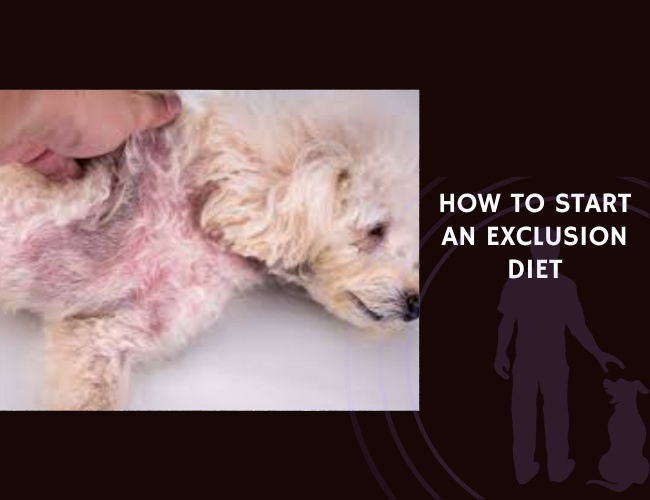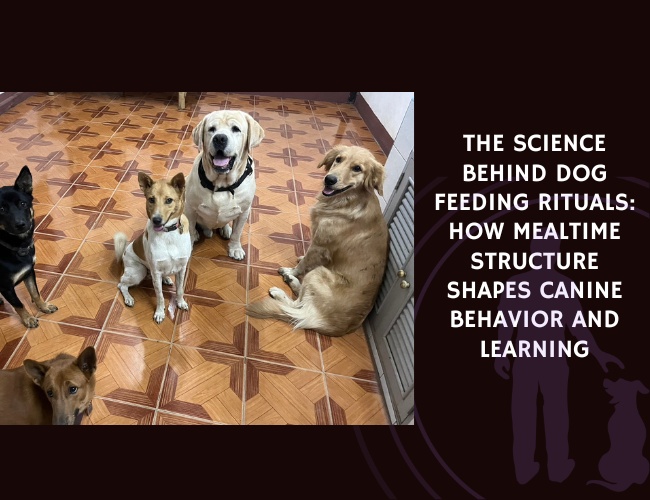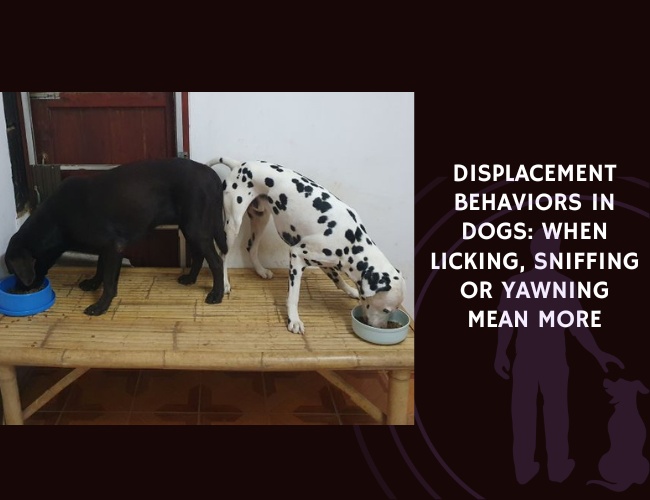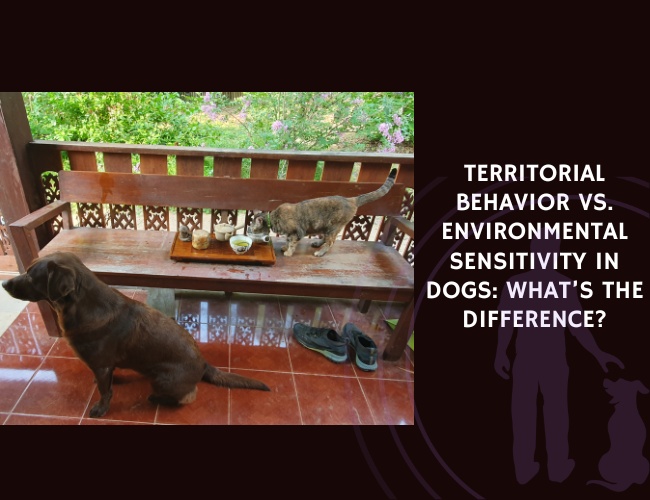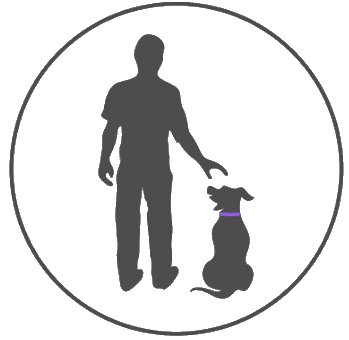Understanding the Basics of Exclusion Diets
Definition and Purpose of an Exclusion Diet
An exclusion diet, also known as an elimination diet, involves feeding your dog a simplified diet made of a limited number of ingredients. These ingredients should be new to your dog, meaning they have never been a regular part of your pet’s diet. The main goal is to identify food allergens—substances that cause allergic reactions—by removing potential allergens and then reintroducing them one at a time. This process helps determine which specific foods are causing adverse reactions in your dog.
How Food Allergies Manifest in Dogs
Food allergies in dogs often present themselves through various dermatological and gastrointestinal symptoms:
- Dermatological Symptoms: Itching, redness, and inflammation of the skin, often around the ears, paws, rear end, and face. Chronic ear infections and hair loss can also be signs.
- Gastrointestinal Symptoms: Vomiting, diarrhea, gas, and an increase in the number of bowel movements.
These symptoms can significantly affect your pet’s quality of life, making it essential to identify and eliminate the offending allergens.
Why an Exclusion Diet Might Be Necessary for Your Pet
An exclusion diet is often necessary when your dog shows persistent symptoms that suggest food allergies but where the specific allergen remains unidentified. Traditional testing methods, such as blood tests, might not always accurately identify food allergies. Symptoms like chronic itching, recurrent skin or ear infections, and ongoing gastrointestinal distress can greatly impact your dog’s health. Implementing an exclusion diet can help:
- Improve Symptom Management: By identifying and eliminating the offending allergens, your dog’s symptoms can be alleviated, improving their overall health and comfort.
- Reduce Medication Dependence: Long-term use of medications like corticosteroids to manage allergy symptoms can have side effects. An exclusion diet can offer a natural method to manage allergies, potentially reducing reliance on such drugs.
- Provide Nutritional Insight: Observing how your dog reacts to different food components can give you valuable insights into their nutritional needs and adaptations for their long-term diet.
Identifying food allergies through an exclusion diet is a meticulous but valuable process that ensures the health and well-being of your pet by precisely pinpointing the foods your dog can safely enjoy. As you prepare to embark on this dietary change, comprehending the role and execution of an exclusion diet will set a solid foundation for managing your dog’s health conditions effectively and responsibly.
Consulting with Your Veterinarian
Importance of Professional Guidance Before Starting
Beginning an exclusion diet for your dog is a significant step and should never be undertaken without professional guidance. A veterinarian’s expertise is crucial in ensuring the process is safe and effective. Without proper supervision, you risk exacerbating your pet’s condition or failing to identify the actual allergen.
Veterinarians can provide valuable insights into formulating a nutritionally complete exclusion diet that addresses potential allergens while meeting all of your dog’s dietary needs. They ensure that your pet is not inadvertently deprived of essential nutrients, which can lead to other health problems. Professional guidance helps in tailoring the diet plan according to the specific requirements and health status of your dog.
What to Expect During the Initial Consultation
The first consultation with your veterinarian is a vital step in starting an exclusion diet. During this session, the veterinarian will conduct a thorough assessment of your dog’s health, including a comprehensive review of their medical history and current symptoms.
Assessment and Examination
The vet will perform a thorough physical examination to check for any obvious health issues that could be causing your dog’s symptoms. They may also recommend certain diagnostic tests to rule out other potential causes such as infections, parasites, or other systemic diseases that could mimic food allergy symptoms.
Discussion on Current Diet and Symptoms
A very detailed discussion regarding your dog’s existing diet is essential. The veterinarian will inquire about all types of foods your dog consumes, including treats, supplements, and even table scraps, as these are all potential sources of allergens. Accurate information about your dog’s current diet will help the vet identify possible culprits and plan the exclusion diet accordingly.
Discussing Your Dog’s Medical History and Symptoms
Your dog’s medical history is an integral piece of the puzzle when determining if an exclusion diet is necessary. The veterinarian will delve into:
- Previous Health Issues: Previous instances of illnesses or allergies, and any treatments that were effective or ineffective.
- Family History: Genetic predispositions can play a role in food allergies. Information about the health of your dog’s relatives can provide valuable insight.
- Symptom Patterns: Specificity about the symptoms is crucial. Details about when and how the symptoms manifest can significantly narrow down potential allergens. For example, symptoms like chronic itching, gastrointestinal disturbances, or recurrent infections could be indicative of food allergies.
By discussing your dog’s medical history and symptoms, the veterinarian can decide if an exclusion diet is the prudent next step. If an exclusion diet is recommended, they will explain the process and the steps involved. This ensures that you have a clear understanding of your role and what to expect in the coming weeks.
After this consultation, you will be better equipped to embark on an exclusion diet with your dog, knowing that you have the necessary professional backing and a solid plan in place. This will pave the way for the next steps in the exclusion diet journey.
Choosing Appropriate Food Components
Following the consultation with your veterinarian, the next step is to choose appropriate food components for your dog’s exclusion diet. This involves carefully selecting a novel protein your dog has never eaten, identifying suitable carbohydrate options, and ensuring complete nutritional balance.
Selecting a Novel Protein Source
The foundation of an exclusion diet begins with choosing a novel protein source. A novel protein is one that your dog has never consumed before, reducing the risk of allergic reactions. Common novel proteins used in exclusion diets include:
- Rabbit
- Venison
- Duck
- Kangaroo
- Bison
Selecting a novel protein helps to isolate potential allergens that may be causing your dog’s symptoms, as it is less likely your dog has developed a sensitivity to an unfamiliar protein source.
Identifying Suitable Carbohydrate Options
Carbohydrates are another important component of your dog’s diet that needs careful consideration. Similar to proteins, you need to select carbohydrates which your dog has not previously consumed. Suitable carbohydrate options in exclusion diets may include:
- Sweet potatoes
- Pumpkin
- Tapioca
- Squash
These carbohydrate options are less likely to cause an allergic reaction and are also beneficial for your dog’s digestive health.
Ensuring Complete Nutritional Balance
While choosing novel proteins and carbs is essential, it is equally important to ensure that the exclusion diet remains nutritionally balanced. Dogs require a mix of vitamins, minerals, and essential fatty acids for overall health. To achieve a balanced diet:
- Include a variety of safe foods to cover a broad spectrum of nutrients.
- Consider using a veterinary-formulated supplement if necessary.
- Regularly consult with your veterinarian to adjust the diet based on your dog’s response and nutritional needs.
Ensuring that your dog’s exclusion diet is nutritionally complete avoids deficiencies that could lead to other health issues.
These steps help lay the foundation for the next phase of the exclusion diet. Your veterinarian can provide additional guidance to make sure the diet meets your dog’s specific health needs.
Implementing the Diet
Setting Up a Proper Feeding Schedule
When initiating an exclusion diet for your dog, the first crucial step is establishing a proper feeding schedule. Consistency is key to accurately evaluating the impact of the new diet on your dog’s health. Feed your dog at the same times each day, ideally splitting the daily allowance into two or more smaller meals to aid digestion and maintain steady energy levels. Ensure fresh water is always available.
Begin by measuring the food portions according to your veterinarian’s recommendations. Overfeeding or underfeeding can skew the results of the diet trial and affect your dog’s overall health. Regular, scheduled feedings help monitor your dog’s reaction to the novel protein and carbohydrate sources more precisely.
Maintaining Strict Dietary Control for 8-12 Weeks
An exclusion diet must be strictly followed for 8 to 12 weeks, as this period allows sufficient time to observe your dog’s response to the new foods. Deviating from the diet can compromise the entire process, making it difficult to identify allergens accurately.
This means no deviations, no matter how small. Every ingredient your dog consumes must be part of the planned exclusion diet. This strict control is essential to ensure the diet’s effectiveness and to avoid inadvertently reintroducing potential allergens.
Avoiding Treats and Additional Foods During the Trial
During an exclusion diet trial, it is imperative to avoid treats, table scraps, and any additional foods or flavors besides what is included in the exclusion diet plan. Even a small treat can introduce potential allergens and render the whole trial inconclusive. This can be challenging, especially if treats are a regular part of your dog’s routine or training, but the long-term goal of identifying and managing food allergies outweighs the temporary inconvenience.

To help manage this, you can use small portions of the novel protein food or approved ingredients from the exclusion diet as treats. This ensures that you are not introducing any new allergens while still rewarding and training your dog.
It may also help to inform all family members, friends, and anyone who interacts with your dog about the strict dietary requirements. Everyone needs to be on board with avoiding unapproved foods to ensure the trial’s success.
Implementing an exclusion diet with strict adherence lays the foundation for accurately identifying food allergies in your dog. Detailed monitoring and recording, which we’ll explore next, help in tracking their progress and understanding how well the diet is working.
Monitoring and Recording Progress
After carefully selecting and implementing the exclusion diet for your dog, the next critical phase involves meticulously monitoring and recording their progress. This step plays an essential role in identifying improvements or adverse reactions, ensuring the accuracy of the exclusion diet procedure.
Keeping a Detailed Food and Symptom Diary
To monitor your dog’s response to the exclusion diet effectively, maintaining a detailed diary is essential. This diary should include:
- Food Intake: Record every meal, including the type of food, quantity, and specific ingredients. This ensures that you can track any potential changes or deviations in the diet.
- Time and Date: Note the exact time and date of each meal. This helps in observing whether certain reactions correspond with specific feeding times.
- Symptoms: Document any symptoms observed, including itching, gastrointestinal issues, lethargy, or any changes in behavior. Be comprehensive and detail the severity and duration of symptoms.
- Additional Notes: Include any other relevant observations, such as changes in weight, coat condition, or overall demeanor.
This thorough documentation provides a clear and structured way to identify correlations between your dog’s diet and their health.
Tracking Changes in Your Dog’s Condition
Consistent and detailed monitoring allows you to track changes in your dog’s condition accurately. Over the 8-12 week period of the exclusion diet, look out for the following:
- Improvement: Noticeable reduction or complete absence of previous symptoms, such as less itching, improved digestive function, or restored energy levels.
- Adverse Reactions: Emergence of new symptoms or the worsening of existing ones, which may indicate an allergy to the new diet components.
- Overall Health: Keep an eye on your dog’s weight, coat quality, and overall happiness. Positive changes in these areas often signal that the diet is benefiting your dog.
By systematically tracking these changes, you can provide your veterinarian with precise information, helping them assist you in refining the diet plan if needed.
Identifying Improvements or Reactions
As you monitor your dog’s progress, identifying improvements or reactions becomes straightforward with meticulous records. The food and symptom diary will help in:
- Detection of Food Allergies: Clear identification of foods that trigger allergic reactions. If symptoms persist or worsen, discuss with your vet the possibility of altering the diet further.
- Understanding Nutritional Needs: Observing improvements in your dog’s condition can suggest that their nutritional needs are being met more effectively by the new diet.
- Long-term Health Insights: Tracking your dog’s health over a considerable period allows you to gather invaluable insights into their dietary needs and responses, contributing to a more informed long-term feeding strategy.
Each of these elements is vital for accurately assessing the success of the exclusion diet and making necessary adjustments.
Transition
Adhering to a disciplined approach in monitoring and recording your dog’s progress ensures that you have comprehensive documentation of their response to the exclusion diet. This methodical process not only aids in identifying food allergies but also facilitates the creation of a tailored long-term feeding plan.
Reintroducing Foods
Once the exclusion diet trial period has concluded, your dog’s symptoms should ideally have improved or resolved. The next step is reintroducing foods to identify specific allergens and establish a long-term feeding plan for your dog. This process needs to be systematic and closely monitored to accurately determine which foods trigger adverse reactions.
Process of Gradually Adding Back Potential Allergens
Start the reintroduction phase by introducing one new food at a time. This methodical approach helps isolate the effects of each food component on your dog’s health. Here’s a step-by-step guide:
- Begin with One New Food: After the 8-12 week exclusion period, select one food item not included in the elimination diet. This could be a protein or carbohydrate source you suspect your dog could tolerate. For example, if your dog was on a diet of novel protein like rabbit and sweet potatoes, you might start with a common protein like chicken.
- Small Portions for Several Days: Introduce the new food in small amounts, incorporating it into one of the daily meals. Maintain this addition for 3-5 days while observing your dog’s response. Pay close attention to any signs of an allergic reaction, which might include itching, gastrointestinal distress, or behavioral changes.
- Document Reactions: Throughout the reintroduction phase, keep a detailed food and symptom diary. Record the type and amount of food introduced, the dates of introduction, and any symptoms observed. This diary helps pinpoint the offending food ingredients and aids in discussions with your veterinarian.
- Monitor and Assess Changes: If your dog shows no adverse reactions during the 3-5 day period, the reintroduced food can be considered safe. If symptoms resurface, discontinue the new food immediately and allow your dog’s system to return to baseline before introducing another food item.
Observing and Documenting Reactions
Close monitoring during reintroduction is crucial. Here’s what to watch for and how to document it:
- Physical Symptoms: Look for signs such as itching, redness, swelling, ear infections, vomiting, diarrhea, or changes in appetite. Note when these symptoms occur and their severity.
- Behavioral Changes: Pay attention to any shifts in your dog’s mood or behavior, like increased lethargy, hyperactivity, or unusual irritability.
- Consistency and Detail: Precision in documentation can’t be overemphasized. Even subtle changes can be significant in identifying food sensitivities. Keep your notes detailed and consistent, ensuring you include dates and specific observations.
Creating a Long-Term Feeding Plan Based on Results
Once the reintroduction phase provides clear insights into which foods cause adverse reactions and which do not, work with your veterinarian to create a sustainable, nutritionally balanced long-term diet plan for your dog:
- Safe Foods List: Compile a comprehensive list of foods that your dog tolerates well. This list will form the basis of your dog’s regular diet.
- Balanced Nutritional Plan: With the guidance of your veterinarian, ensure that the safe foods combined offer a complete and balanced diet. This might involve integrating commercial diets designed for dogs with food sensitivities or formulating home-cooked meals under vet supervision.
- Regular Monitoring: Even after establishing a long-term feeding plan, continue to monitor your dog’s health regularly and keep your veterinarian informed of any changes. Sometimes, new sensitivities can develop, necessitating adjustments to the diet.
By following these steps systematically, you can identify your dog’s food allergens and craft a suitable and healthy long-term diet. Remember that this process requires patience and close collaboration with your veterinarian to ensure your dog’s well-being.

